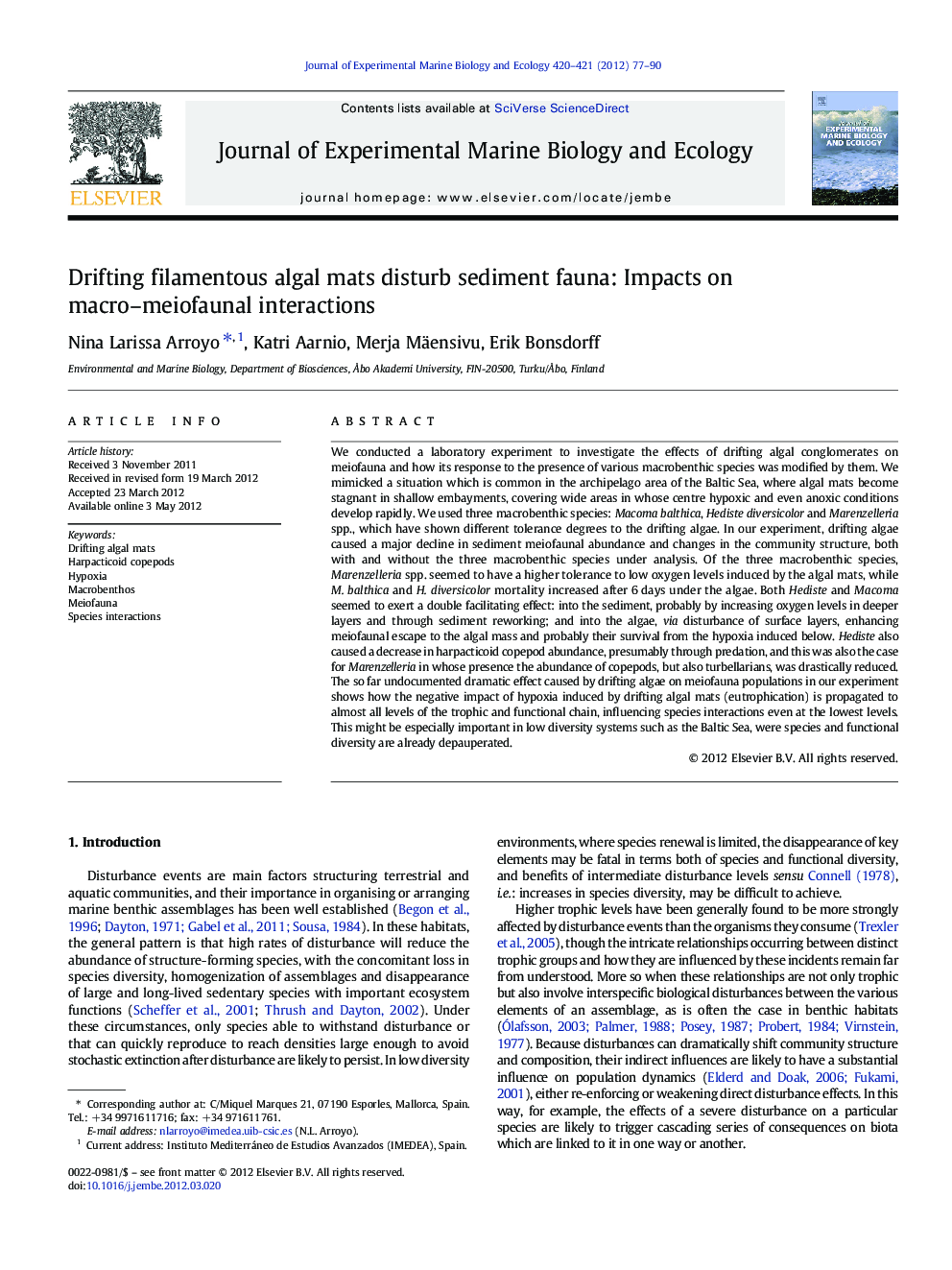| Article ID | Journal | Published Year | Pages | File Type |
|---|---|---|---|---|
| 4395983 | Journal of Experimental Marine Biology and Ecology | 2012 | 14 Pages |
We conducted a laboratory experiment to investigate the effects of drifting algal conglomerates on meiofauna and how its response to the presence of various macrobenthic species was modified by them. We mimicked a situation which is common in the archipelago area of the Baltic Sea, where algal mats become stagnant in shallow embayments, covering wide areas in whose centre hypoxic and even anoxic conditions develop rapidly. We used three macrobenthic species: Macoma balthica, Hediste diversicolor and Marenzelleria spp., which have shown different tolerance degrees to the drifting algae. In our experiment, drifting algae caused a major decline in sediment meiofaunal abundance and changes in the community structure, both with and without the three macrobenthic species under analysis. Of the three macrobenthic species, Marenzelleria spp. seemed to have a higher tolerance to low oxygen levels induced by the algal mats, while M. balthica and H. diversicolor mortality increased after 6 days under the algae. Both Hediste and Macoma seemed to exert a double facilitating effect: into the sediment, probably by increasing oxygen levels in deeper layers and through sediment reworking; and into the algae, via disturbance of surface layers, enhancing meiofaunal escape to the algal mass and probably their survival from the hypoxia induced below. Hediste also caused a decrease in harpacticoid copepod abundance, presumably through predation, and this was also the case for Marenzelleria in whose presence the abundance of copepods, but also turbellarians, was drastically reduced. The so far undocumented dramatic effect caused by drifting algae on meiofauna populations in our experiment shows how the negative impact of hypoxia induced by drifting algal mats (eutrophication) is propagated to almost all levels of the trophic and functional chain, influencing species interactions even at the lowest levels. This might be especially important in low diversity systems such as the Baltic Sea, were species and functional diversity are already depauperated.
► Meiofauna can be vulnerable to hypoxia induced by drifting algal mats. ► Macrofauna may cause further losses through predation. ► Macrofauna may induce migration into the algal conglomerates. ► Polychaetes actively predate on harpacticoids and their nauplii and turbellarians.
